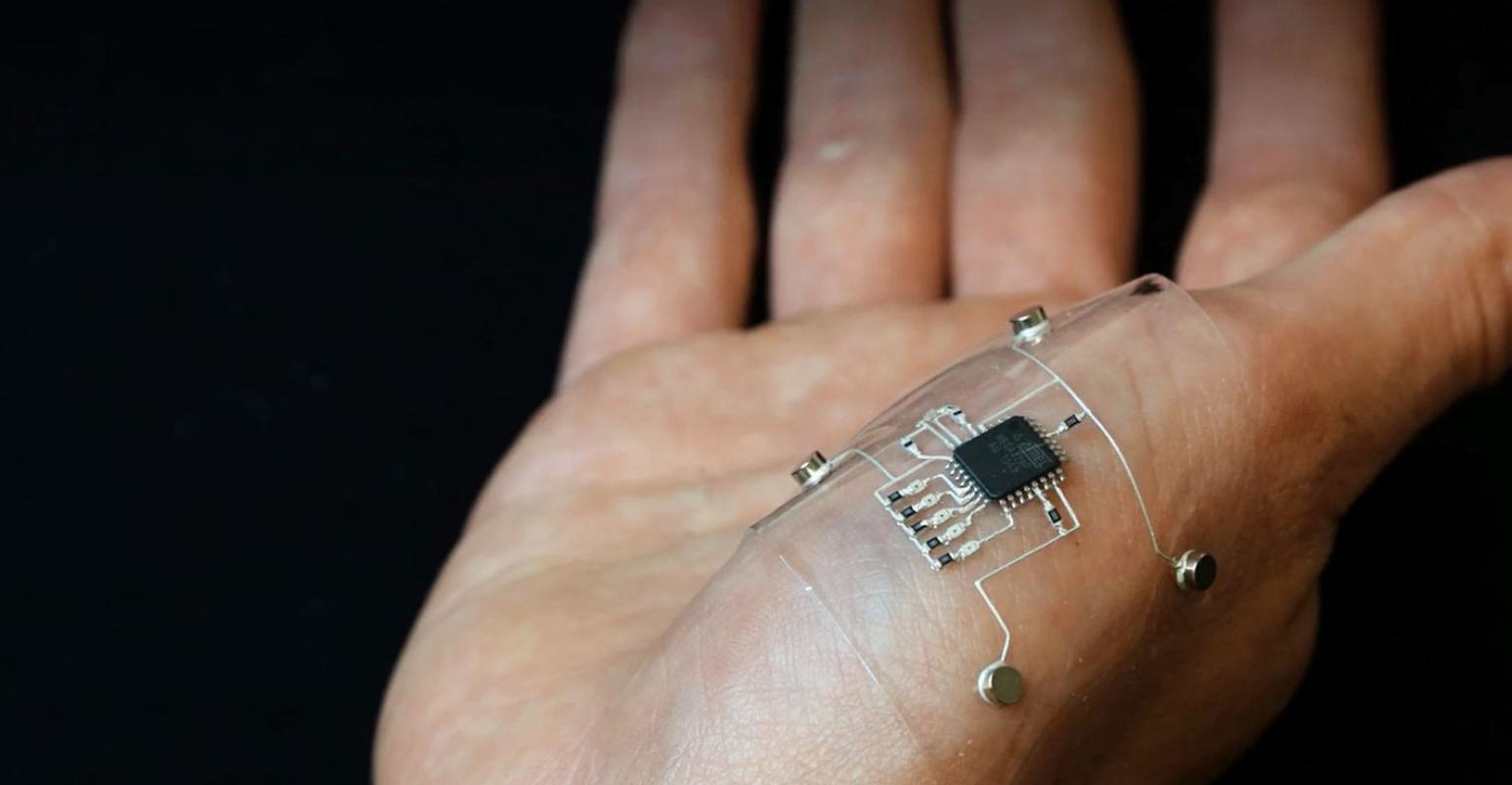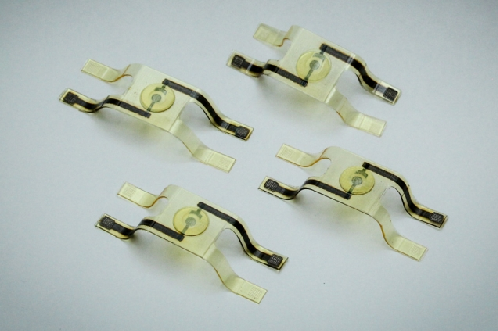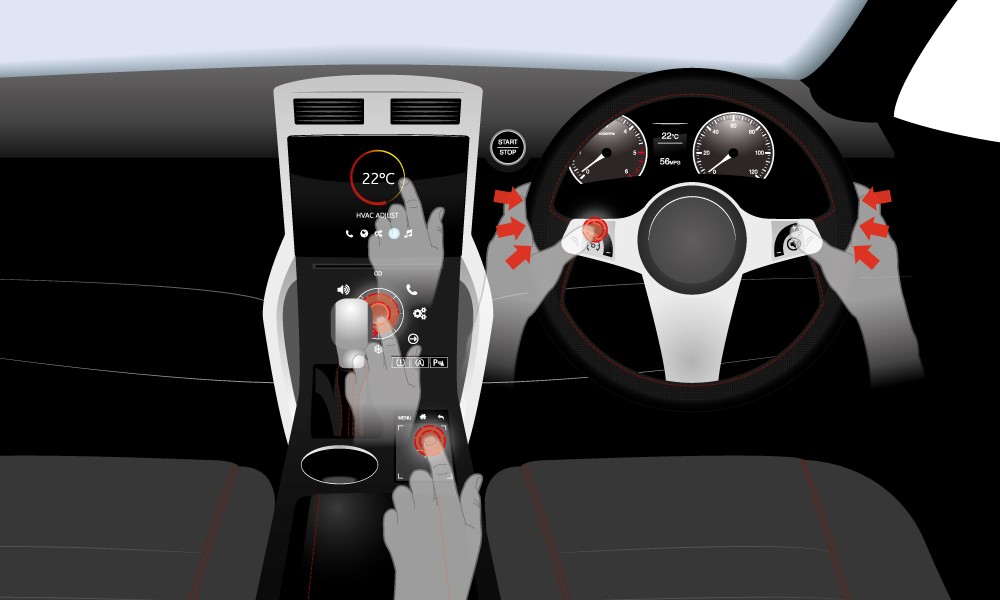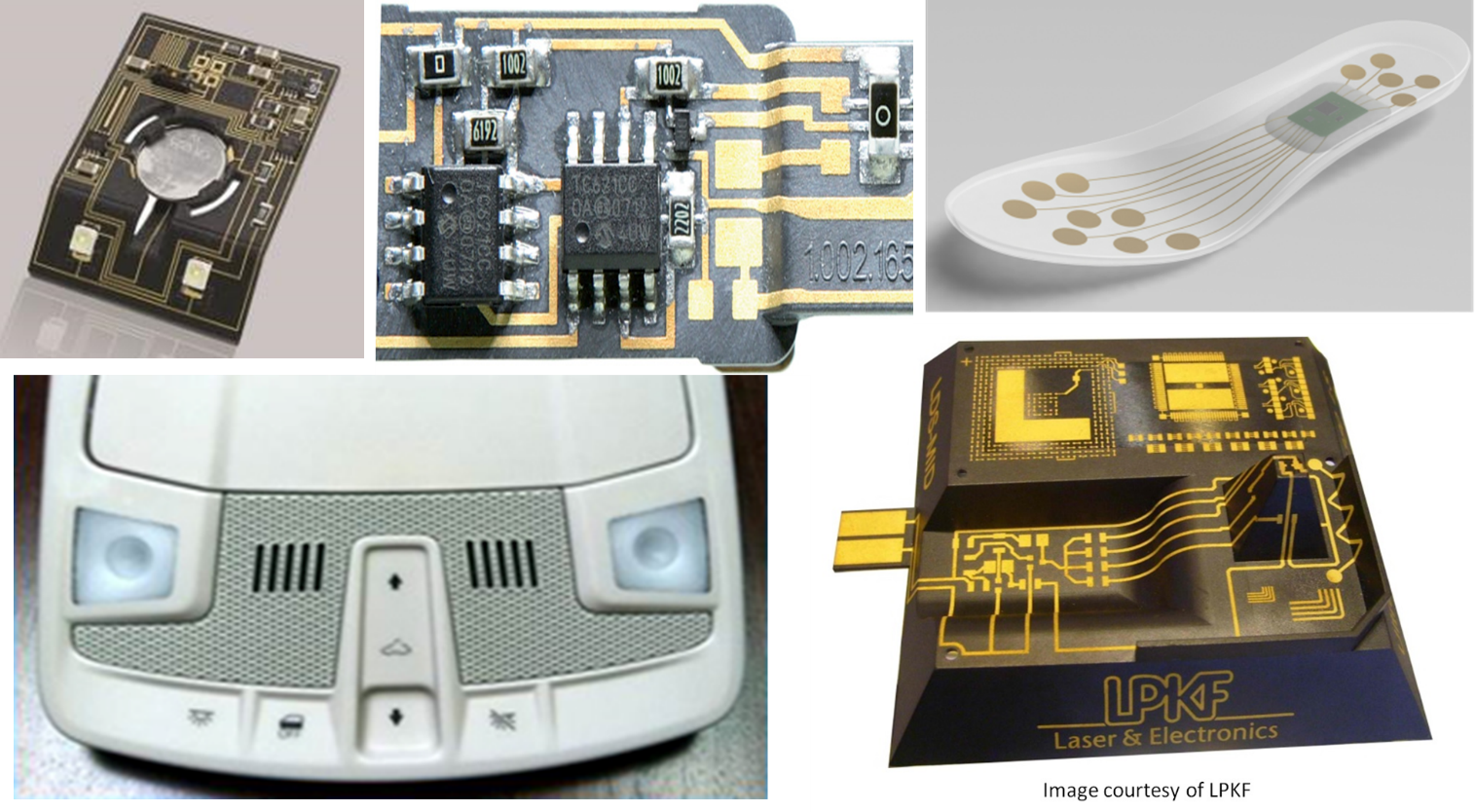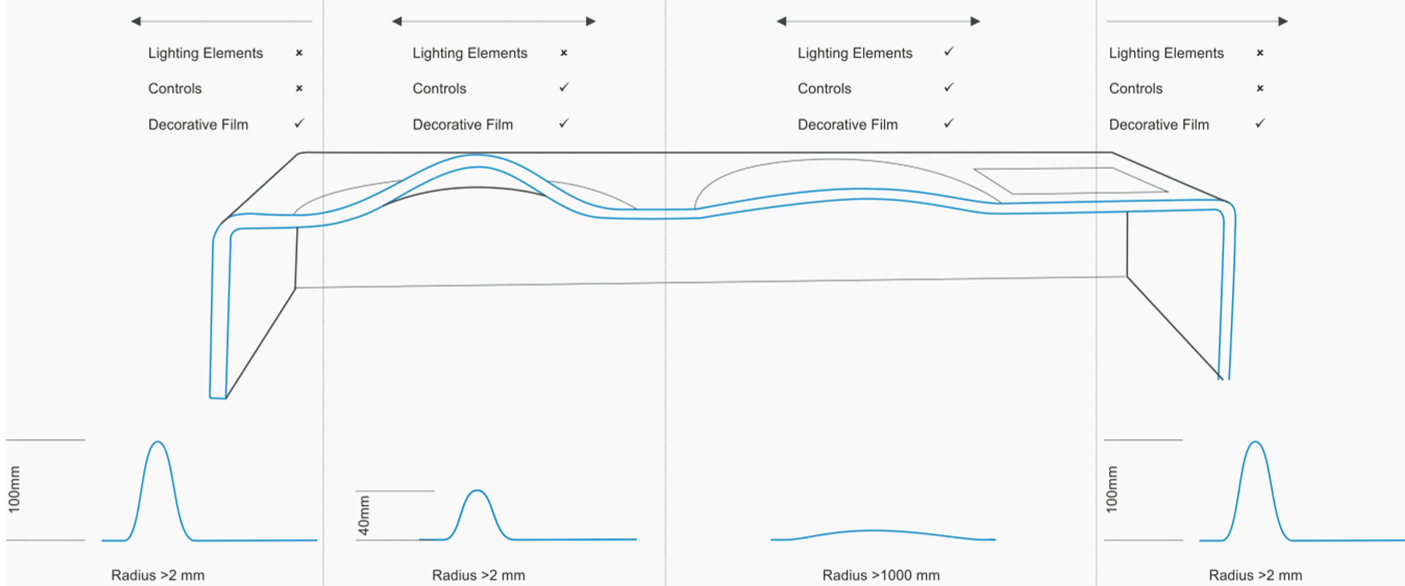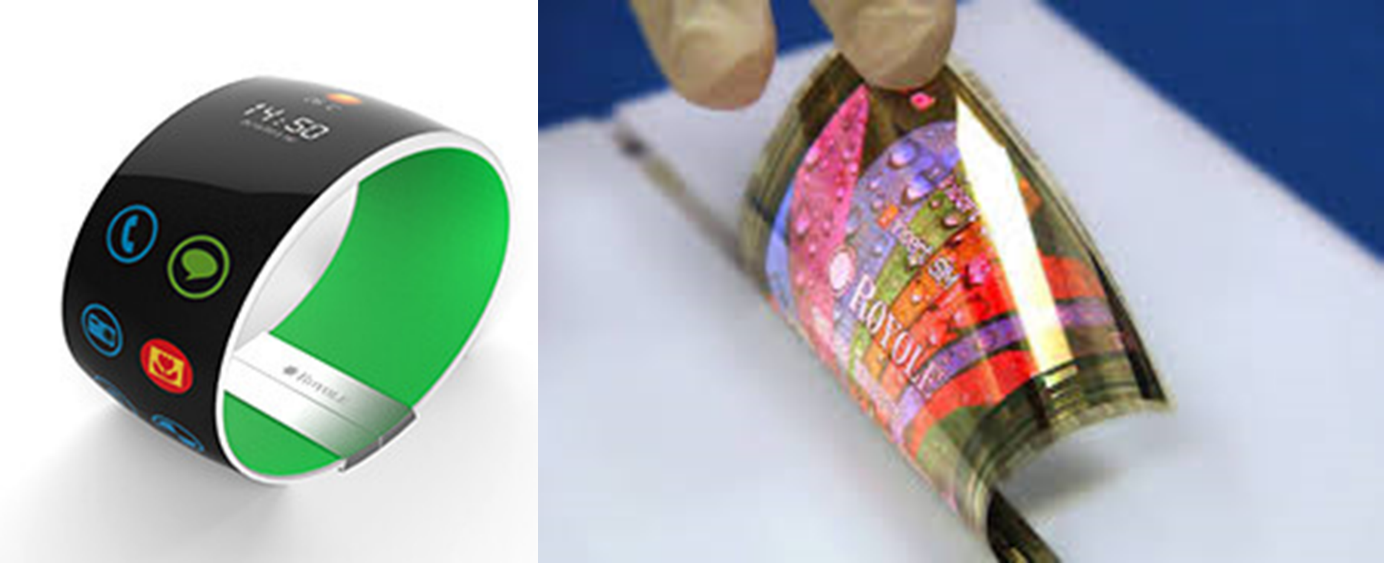NextFlex Flexible Electronics Development
An Air Force Research Laboratory-led project in conjunction with NextFlex has resulted in the first ever, functional samples of flexible Arduino circuit board systems made by using a flexible hybrid electronics manufacturing process, setting the stage for smart technologies for the internet of things and sensor applications like wearable devices.
made by using a flexible hybrid electronics manufacturing process, setting the stage for smart technologies for the internet of things and sensor applications like wearable devices.
The flexible Arduino can enable rapid innovation in flexible and wearable devices for applications including monitoring hydration status, glucose levels, heartrate and more.
It reduces the number of manufacturing process steps by more than 60 percent and the weight of the circuit by 98 percent, ultimately increasing the possibilities for design applications. This was achieved by replacing the traditional circuit board with a thin, flexible plastic sheet, eliminating the traditional microcontroller packaging, and implementing digital printing processes for circuit elements.
Researchers Develop Way to 3D Print Flexible Electronic Circuits
Engineers at the Air Force Research Laboratory worked with colleagues at Harvard University to develop a new way to “print” stretchable, flexible electronics dubbed Hybrid 3D printing, uses additive manufacturing to combine soft, conductive inks with a material substrate to wind up with stretchable, wearable electronic devices.
In the lab, the researchers used a 3D printer to create conductive traces of flexible, silver-infused thermoplastic polyurethane. A pick-and-place method was then used to install microcontroller chips and LEDs into the flexible substrate, augmented by an empty printer nozzle and vacuum device to create the hybrid circuits.
One step in the Hybrid 3D Printing is to 3D print conductive traces of flexible, silver-infused thermoplastic polyurethane into a flexible substrate. Then, a pick-and-place method using empty printer nozzles and a vacuum system sets microcontroller chips and LED lights into that substrate.
When tested, the hybrid-electronic devices could function even after being stretched by more than 30% from the original size.
For more information Click http://www.machinedesign.com/3d-printing/researchers-develop-way-3d-print-flexible-electronic-circuits
Expanding Polymer Creates Printable, ‘Peel and Go’ Self-Folding Structures
In addition researchers have developed a new method that produces a printable polymer structure that begins to fold itself up as soon as it’s peeled off the printing platform, opening the door for new designs in printed electronics and other applications.
A team at the Massachusetts Institute of Technology’s (MIT’s) Computer Science and Artificial Intelligence Laboratory (CSAIL) printed the so-called “peel-and-go” structures using a new printer-ink material that expands after it solidifies. This is different than typical materials, which contract slightly as they solidify, creating a limitation for which designers have had to find workarounds.
The team developed the polymer material that was used for the peel-and-go structures by accident when trying to develop ink for printing more flexible components. Researchers inadvertently discovered one experimental material that expanded slightly after it hardened.
Devices printed in a conventional 3D-printing process are built up in layers. In the prototypes using the new material, researchers deposited the expanding material at precise locations in either the top or bottom few layers. The bottom layer adhered slightly to the printer platform, which was enough to hold the device flat as the layers built up. However, as soon as researchers peeled the finished device off the platform, the joints made from the new material begin to expand, bending the device in the opposite direction.
For more information CLICK https://www.designnews.com/materials-assembly/expanding-polymer-creates-printable-peel-and-go-self-folding-structures/112037530757742?ADTRK=UBM&elq_mid=1835&elq_cid=61542
Flexible Hybrid Electronics has been a strong want by the industry for the  last 15+ years. In Europe they are doing more (like the Organic Electronics Association) and have allocated resources to validate technology for application.
last 15+ years. In Europe they are doing more (like the Organic Electronics Association) and have allocated resources to validate technology for application.
FHE could be a disruptor in Auto Electronics though there are still some major roadblocks to application with a business case. IQM Research Institute is conducting the FHE Pathfinder Study to support NEXTFLEX Project Calls in the Automotive and Trucking Sector Applications.
For Automotive the deliverables for FHE are:
- Greater design and styling flexibility.
- Better packaging with 20% to 45% weight reduction.
- Reliability and quality improvement.
- Faster addition of functional attributes.
- Fast to market product enhancements.
A few potential applications are:
- Smart connectors.
- Reduce wire count by integrating electronic circuits into trim panels.
- Integrated printed functional input and displays.
- Eliminate seat wiring and control modules through integration.
- Integrate lighting, controls and wiring directly into package assembly.
There are still many technology and production roadblocks to resolve. No Single Organization has all the Resources Required to Fully Bring FHE to Automotive Applications at Cost and Scale. NEXTFLEX will therefore be developing quarterly “Project Calls” to fund solutions to gaps and barriers
Participation in the Study allows organizations to query their customers and suppliers and make issues known in order to bring funding to common gaps and barriers.
The challenges are huge if we are to meet these goals before 2020 MY implementation. Five key design and process challenges are as below:
- Printed SMD components.

- Printed LED’s.
- Circuit forming and insert molding process reliability.
- Pick and place process technology validation.
- Higher current carrying capacity for the formed circuits.
A few technology innovation companies that are in this space are listed as below:
- T-Ink http://www.t-ink.com/products/ : Their have patented mold technology to create thin, lightweight and flexible circuits and switches to enhance product functionality.
- Butler Technologies http://www.butlertechnologies.com/ : Graphic Overlays, Printed Electronics, Printed Sensors and other areas of expertise.
- Alpha Micron http://alphamicron.com/ : Good process capability.
- Lumitex http://www.lumitex.com/ : Formed Clad Fiber for 3D formed lighting solutions.
- DuPont http://www.dupont.com/ : Functional, stretchable electronic ink materials for Seats and Interior Trim Electronics.
- Faurecia http://www.faurecia.com/en : They have been doing extensive development in smart surfaces.
- Vexos http://www.vexos.com/ : Electronic manufacturing and innovation.
- Myco International http://www.maycointernational.com/ : Specialist in Automotive Interiors.
- IAC http://www.iacgroup.com/ : Expertise in HybridFleece Molding™ for Weight Savings in interiors
- Quad Industries http://www.quad-ind.com/printed-electronics/ : They are exploring the field of organic and printed electronics for cost-effective production processes.
- Enfucell SoftBattery® http://www.enfucell.com/ : Disposable, thin and flexible printed power source.
- CIT Technology http://www.carclo.co.uk/ : Formerly Conductive Inkjet Technology developed and patented two-stage print and plate process that enables copper to be printed onto PET substrates.
- Gigaom gigaom.com : Thin-flexible electronics.
- Molex Incorporated (Soligie) http://www.molex.com/molex : Printed and flexible electronic solutions
- Harting Inc http://www.harting.com/en/home/ : Molded Interconnect Device for 3D circuits. Plating and pick and place SMD component and soldering capability.
- LPKF http://www.lpkf.com/ : Developed MID technology as a laser-based procedure for the production of MID’s.
- OPE Journal http://www.ope-journal.com/tagged/tag/flexible+electronics.html : Good source to learn more about printed + flexible electronics.
- Idtechex idtechex.com/ : Flexible printed batteries.
- Nth Degree http://www.ndeg.com/ : Printed LED’s.
The Flexible Hybrid Electronics (FHE) National Network for Manufacturing Initiative (NMMI) is a federally funded $75 million program to accelerate public and private investment in FHE manufacturing.
- 4D Technology: Roll to roll (R2R) manufacturing.
Alpha Micron’s liquid crystal technology performing light control system. AlphaMicron’s liquid crystal technology called e-Tint® allow you to switch between a transparent or darkened state with no loss in visual integrity at the simple push of a button. With e-Tint®, size, shape, color, and level of tint color can be customized to meet various performance needs.
- Acellent Technologies: SMART Layer® is a thin dielectric film with an array of durable, networked piezoelectric sensors.
- Advantest Akron Polymer Systems: Polymer substrates for flexible display substrates
- Applied Materials: OLED and LCD displays.
- Blue Spark Technologies: Thin film batteries.
Brewer Science printed electronics carbon nanotechnology design allows their sensors to signify a change in less than 250 milliseconds. Sensors are also flexible form factor and allowing for easy integration with existing sensing technology. Brewer Science currently offers three types of sensors – InFlect™ Thermistor, InFlect™ Moisture Sensor, and InFlect™ Flex Sensor.
- Butler Technologies: Switches, sensors and printed electronics.
- E Ink: E paper technology.
- ENrG: Ultra-thin, Flexible, Ceramic Substrates.
- GrafTech: Graphite electrodes.
- HANA Microdisplay Technologies: High speed roll on roll RFID films.
- i3 Electronics: PCBA fabricators.
Imprint Energy: Ultra-thin flexible batteries. Imprint Energy’s patented ZincPoly™ chemistry is a zinc-based, rechargeable battery materials solution. They have created High Conductivity Polymer Electrolyte (HCPE) that is stable, allows the battery to recharge, can transport ions at a rapid rate, and most importantly, it’s printable to a solid state. To create solid-state batteries using our ZincPoly™ chemistry they have developed a series of electrochemical inks.
- Intrinsiq Materials.
- Jabil Circuit.
- Kent Displays.
- Landauer
- LasX
- Lumitex
- Mac Arthur Corporation
- Mark Andy
- MC10
- MIRWEC Films
- Novacentrix
Optomec specializes in printing 3D conformal sensors and help make devices smart and connected.  We have relevant experience with materials, scalable printing technology, and 3D tool path generation to produce functional electronics that can be used from proof of concept through initial prototypes to full high volume production.
We have relevant experience with materials, scalable printing technology, and 3D tool path generation to produce functional electronics that can be used from proof of concept through initial prototypes to full high volume production.
Touch screen displays is one application they are developing for the future.
- Orbital Research
- PARC, a Xerox Company
- Quality Electrodynamics
- Sensics
- Si2
- SPEC Sensors
- SSI Electronics
Polyera Flexible Thin-Film Transistors (TFTs) are at the core of our Digital Fabric Technology. These devices behave just like the transistors found in traditional electronics, but are also physically flexible. They can be easily used in standard display fabs, as well as with other advanced manufacturing techniques.
- Surfx Technologies
- Thin Film Technology
- TTM Technologies
Uniqarta is commercializing manufacturing processes that transform conventional semiconductor wafers into ultra-thin, flexible ICs assembled on flexible substrates. They combine silicon chips 5-10 times thinner than normal with flexible materials to create products that fit the natural, curvy form of our world.
times thinner than normal with flexible materials to create products that fit the natural, curvy form of our world.
FHE devices have a number of advantages over conventional electronics – can be embedded or placed where rigid circuit boards cannot, reduced size and weight, rugged and durable, environmentally friendly with potential to reduce cost
- Uniqarta
- Valtronic Technologies
- Vitriflex
Update as investigated as of 09/01/2016
Enfucell SoftBattery® is a disposable, thin and flexible printed power source for devices like wireless sensors for healthcare, sports and logistics.
The power source is flexible and made of low cost industrial eco-friendly materials. It is based zinc and manganese dioxide, and zinc chloride as an electrolyte. Sizes range from 1 cm² to 100 cm² and comes in different shapes. The only constraint is that its suitable for low power applications only.
Tangio Printed Electronics multi-touch force sensor sized 12cm x 8cm are per current industry technology concepts from another company’s wo are automotive certified like IEE SA. The basic issue is still that FSR are not easily adaptable to flexible circuits or 3D surfaces
Silver nanowires offer good electrical conductivity, optical transparency, and flexibility, making it  currently the major ITO replacement materials. Please click http://www.cambrios.com/ for more information.
currently the major ITO replacement materials. Please click http://www.cambrios.com/ for more information.
High-density, multi-level interconnects, flex circuits, and tape for tab – refer US 5106461 A.
Multiskin from Plastic Electronics GmBH is a technology to create smart surfaces with thin laminates of standard plastic films. These film laminates are particularly suitable for larger surface areas also with smooth 3D forms. touchskin® stands for the integration of sensor technology in the surfaces of molded plastic parts. The „sensor surface “is created in injection molding by the back injection of foils with electrically functional layers. In this way the operating buttons, knobs or controls can be directly embedded in the plastic elements. The process offers great potential for the realization of innovative design concepts, the reduction of assembly costs and an increase in the operational reliability of operating functions.
The basis for the production of the touchskin® components are compounded foils coated with sensor structures, which are further processed into foil inserts. The sensor foil is joined with the decorative foil (black mold) in one step in the injection-molding machine to make a sandwich component.
As of 09/24/2016 the basic challenges are still the same:
- Flexible or 3D formed circuits reliable for other than small consumer applications.
- Flexible circuits designed for currents other than milliamp signal circuits.
- Printed printed SMD components other than resistors and capacitors.
- Reliable process for large flex circuits designed for 6 sigma reliability.
- 3D molded circuits that can survive molding temperatures of 320C.
Automotive market has unlimited applications for flexible and printed electronics for input devices,  displays and more. Continental Corporation has investigated and developed flexible and printed electronics for touch screens in cars and curved AMOLED screens.
displays and more. Continental Corporation has investigated and developed flexible and printed electronics for touch screens in cars and curved AMOLED screens.
However, like those developed by other automotive supplier’s cost coupled with reliability and packaging is still a challenge.
3D printing is another opportunity for lower volume FHE products targeted to luxury cars with volumes < 15,000 annually with current 3D printers able to fabricate objects from plastics, metals, ceramics, etc. It is now moving into the realm of electronics. Optomec, has developed patented printed electronics technology which applies conductive nano-particle inks on to the component. Neotech AMT GmbH 3D Printed Electronics system is capable of production complex circuitry on almost any 3D surface.
Light Beam Sintering (LBS) is a non-contact, photonic sintering technique that can be applied to printed electronic circuits on “low temperature” substrates such as PC.
Another 3D printing technology has been developed and can produce curved and flexible electronics circuits, according to the Ulsan National Institute of Science and Technology (UNIST) in South Korea. They can imprint 0.001 millimeter ultra-fine patterns on plastic circuit boards at room temperature targeted of course for flexible wearable technology.
Jang-Ung says this technology, dubbed “3D electro-hydrodynamic inkjet printing,” can produce ultra-fine patterns as thin as 0.001 mm, improving the maximum printing resolution 50 times greater than before. It also lowered the printing temperature to work at room temperature.
MH&W International has introduced Keratherm 86/77 for providing electrically conductive bonding sites on a flexible, thermally conductive material that can be attached too non-linear, heat  spreading structures.
spreading structures.
Good for mounting of LEDs and other hot components on curved surfaces where FR4, MCPCBs and other rigid materials can’t be used.
Per MH&W “Keratherm 86/77 is a flexible thermal circuit, or FTC, that consists of a thin layer of etch able copper bonded to a highly thermally conductive silicone film. The strong, supple material can be applied to curved and irregular, heat spreading surfaces with peel-and-stick attachment. The material allows LED arrays to be placed along stairs and railings, inside headlights, across display cases, and other locations where LED usage requires both attachment and thermal management”.
Parts can be readily handled, fabricated and recycled.
As of 10-03 we have identified the Faurecia DecoDisplay as an ideal design concept for FHE integration. These are the type of assemblies where FHE benefits would be most prevalent.
Stage 1 Target:
Using FHE technology and manufacturing integrate electronics and DecoDisplay IP Trim into one assembly.
Develop flexible display curved to match the design of the IP which can be integrated to the smart surface.
Final Target:
The entire assembly as one integrated part. This could be along the same lines as integrated insert molded assembly where the copper circuits are cut and stamped and insert molded and go through pick and place machine and electronic components are soldered to the copper traces.
Laser Direct Structuring (LDS) developed by LPKF is technology to create conductive traces on three-dimensional plastic parts.
A new add to this is LDS Powder that enables coating on metallic base bodies to carry electric circuits.
LDS-capable powder coating turns three-dimensional metal parts into LED substrates.
LDC Powder Coating was applied in the development unique light bulb requiring 3D arrangement of the LEDs with reliable heat dissipation.
Powder Coating ensures both a high level of electrical insulation and good heat management of  the entire system. The coating remains stable at temperatures of more than 240 °C – important for industrial soldering processes. Layer thicknesses between 60 – 80 μm are required.
the entire system. The coating remains stable at temperatures of more than 240 °C – important for industrial soldering processes. Layer thicknesses between 60 – 80 μm are required.
For more information please go to http://www.lpkfusa.com/mid/ or write to designhmi@gmail.com if you want to discuss application.
You can also review information on the Design HMI LLC reference page by clicking http://www.designhmi.com/2015/05/04/innovative-led-application-in-car/
CANATU Films & Sensors
Canatu makes flexible transparent conductive Carbon NanoBud films and sensors. These are ideal for flat, flexible and formable displays and touch sensitive surfaces.
It is designed for maximum flexibility, ultra-high contract ratio, zero haze and reflectance and high transmission.
For more information, please click http://www.canatu.com/
Algra developing Finger-Powered Wireless Piezo Switch
Swiss company Algra has developed finger-powered piezo wireless push button, aiming it at stick-on light switches  and other building control applications.
and other building control applications.
The technology, dubbed Dynapic, is based on low-movement piezo keyboards placed on a plate which is bent from 10 to 100µm.
The converter has been developed with the Zürich University of Applied Sciences and Swiss chip firm Microdul.
The key deliverables for Flexible Hybrid Electronics is to be flexible, stretchable, conformable, transparent for applications in flexible displays and lightweight.
Applications for automotive are targeted for weight reduction, reliability, fast to market product introduction, interchangeability between different models as opposed to complexity reduction, feature improvements and other attributes.
There are multiple concepts for flex circuits imbedded into Class-A surfaces for touch input and gesture recognition. These (with very minor exceptions) are essentially low current signal circuits with minimal to no SMD components. All electronics and controls are on separate PCBA connected to the styled / molded in Class A.
The true target for imbedded circuits and designs is to have the entire assembly single piece designed for plug and play installation.
The developments in the last few years through Molded Interconnect Device technology has moved the needed but these are only suitable for small components and still have restrictions on circuit current carrying capacity.
Powder coating technology is another move forward as developed by LPKF but it still has design and validation concerns.
It has advantage of being applied after the part is molded and then it is powder coated, circuits drawn, plated and SMD components mounter. However, the issue still is that you cannot run Class A surface through a plating bath or survive the high temperatures needed for soldering lead free components.
But that technology has at minimum tackled the issue of higher current carrying capacity.
Stretchable bendable electronics is another area but that technology is still at the advanced research stage and requires few years’ research work into materials and processes.
Centre for Process Innovation is working on following innovations:
- Flexible, Lightweight Display Screens for high definition display screens which are lightweight, as thin as a sheet of paper and flexible enough to be bent around a pencil.
- Printable electronics and graphene for next generation displays that can be produced on polymer films, which brings a host of design opportunities like flexible display screens to be conformable to the dashboard, or embedded within the seat backs with no unsightly, or heavy housings, leading to high visual quality displays that take up less space and use less wiring.
- Printed Lighting to print light onto curved surfaces, large or small will mean that any surface in the vehicle can be illuminated.
- Flexible Solar Technologies that facilitate new designs for solar panels with thin, lightweight encapsulating envelopes and flexible form factors.
Options are to easily develop ambient lighting options as shown by the Johnston Control rendering below.
Faurecia has been doing a lot of work on smart surfaces but the challenge still is to integrate circuits and electronics into rigid or flexible surfaces with wireless communication between different smart surfaces in the car – ideal for next generation smart cars.
Bosch systems, Takata and TE Connectivity have all designed concepts for high end smart touch surfaces but they still based on current technology. Most of these are relegated to concept level as actual in car production and introduction of these is still a few years away. Assume FHE Initiative will be considered a success if it can eliminate the gap between concept and production ready designs.
Below is Overhead Design concept. The deliverable here is to have fully validated design within one integrated assembly designed for fast assembly through plunger contacts instead of standard pigtail and large wire harness connectors.
Peratech technology can ‘Print’ Smart Buttons on Any Surface. Per their CEO – QTC is produced as a screen printable polymer-based ink — in opaque and transparent versions. Its material can be added to a regular screen, or any other surfaces. “The integration of QTC takes up no space,” said Stark. “We play with others [screens] very well.” Moreover, QTC requires no signal processing in a host processor, he added, thus reducing a system’s power consumption.
Peratech can print a smart button on any surface of any materials – including laminated wood,” said Stark. “That, I think, is the dream of every industrial designer.”
Because you can print tiny, force-sensing buttons on a surface it’s not necessary to punch out little holes on the plastic case.
Some other companies offering flexible touch technology:
- Nissha Printing Co
- Canatu
- Plastic Logic
Peratech has also announced licensing with QIO and move smart textiles from the niche and into the mainstream. According to Peratech their ElekTex technology combined with QIO’s range of electronics will provide brand holders and consumers with exciting new ways to interact with their personal electronic devices.
QTC materials pressure sensor and can be made in a range of elastomeric forms, including emulsive coatings (down to thicknesses of 10 microns), ‘bulk’ silicone or rubber and textile forms. Peratech pioneered the creation of electronic switches made from textiles as early as 2001.
The automotive cockpit is another potential application for Peratech as per the rendering from their WEB site.
Per Peratech unlike capacitive switching which can false trigger in a dynamic, 3-dimensional environment, Peratech QTC-based sensors measure in 3D. They have also been validated for automotive specifications for environmental and lifetime durability.
The ISORG process is “compatible with system-on-foil integration (co-integration of printed sensors with discrete components and integrated circuits on plastic)”. Current manufacturing is being done on the ISORG pilot manufacturing line, Grenoble, on 32cm x 38cm plastic foils; a mass production demonstrator is planned for 2015-end, on 60cm x 70cm plastic foils. Again, Laser Direct Structuring still seems to be a good solution as earlier demonstrated. Please refer the following for more information:
Again, Laser Direct Structuring still seems to be a good solution as earlier demonstrated. Please refer the following for more information:
However, in LED lighting assemblies, the challenge has been the need for a heat sink to transfer heat away from LEDs, coupled with a printed circuit board for mounted LEDs.
PolyOne’s Therma-Tech material, which is thermally conductive and can also be formulated for electro-conductivity, may eliminate the need for a  metal heat sink and moreover, helps cuts out several steps in the manufacturing process, as the circuit tracks for the copper wiring can be directly placed on the plastic body.
metal heat sink and moreover, helps cuts out several steps in the manufacturing process, as the circuit tracks for the copper wiring can be directly placed on the plastic body.
Per Malte Mussman of Plasma Innovations, “It’s a revolution. No galvanic reinforcement. No printed circuit board. And its 3D, which means a huge design freedom for new lamp designs.”
The process is relatively straightforward, said Mussman: “We have the molded Therma-Tech part. Then, we apply a non-stick black lacquer. We then laser out the precise electronic structure on the part. The next step is plasma deposition, which occurs under atmospheric pressure and during which the metal powder melts into a liquid plasma stream and adheres to the lasered-out tracks on the part, while sliding off the lacquered surface of the rest of the part. The metal (copper) can be built up to thicknesses of anywhere between 5 and 100 microns, depending on the voltage needed for the relevant application.”
A robot then applies the non-lead solder paste to the LEDS and positions these on the MID. “It goes into the oven, at a temperature of just over 200° Celsius, and then it’s done,” added Mussman.
Thermoplastic ally Deformable Electronic Circuits technology is under evaluation in Philips LED lamp carriers, a downlight luminaire and an omnidirectional light source, to demonstrate the potential of this technology in innovative lighting applications. Starting with flat substrate the circuit is given its final form using thermoforming techniques such as vacuum forming, high pressure forming or even injection molding. Upon cooling, the thermoplastic retains its shape without inducing large internal stresses in the circuits.
The resulting designs have a low weight and low complexity, a high resilience, a low tooling and material cost, and more manufacturer independence due to the standard industrial practices that are used.
Currently after discussions with Automotive innovators the following has been identified.
What has already been improved in smart surfaces
- Stretch of inks to 3D shapes, but still ways to go per design community
- Film processing (formation) down to a radius of 2.5mm
- Integration of some passive electronic components
- Decorative a-surface with integrated components on B surface
What still needs improved:
- Limitation of curvature for 3D shape that inks can support
- Limitation to current that ink can handle (only small current draw components can be used)
- Limitation to SMD components that can withstand molding process (temp, pressure)
- Maintain thin packaging while providing uniform back lighting to pictograms
Review two examples today:
- Current patent from Gaming Industry is typical example which has multiple components.
- Audi touch panel which has very complicated assembly design.
FHE can eliminate reducing assembly to single assembly for both with only minor component add for some mechanical party.
One of the most important issues is of course cost. The key deliverable MUST be to provide feature improvement at lower cost.
In case of the gaming device the final assembly could be as shown here from http://zytronic.co.uk/.
Please refer to article from http://spie.org/newsroom/3771-next-generation-air-navigation-displays regarding Aircraft currently use several rugged liquid-crystal displays in the cockpit to visualize flight data.
As these displays get larger and the number of separate screens is reduced, the cockpit workspace becomes better integrated. Taking rationalization of air-navigation equipment to the next level implies a highly integrated single interactive display to assist in all tasks in the cockpit, including navigation, flight-preparation documentation, display of airport maps, non-flight-related functions, and external camera views. This type of display would consist of a reconfigurable dashboard, designed to show important visual elements in prominent view, per need.
Next generation Planar Displays are also ideal investigate for integration of FHE to make this innovation more widespread for automotive, defense and industrial applications.
Currently their design is not very cost efficient. Roll to roll printing would allow better costing models.
Plastic Electronics GmbH with their patented Multiskin Technology has done substantial work in printing, forming and insert molding capacitive touch circuits into curved and styled Class A surfaces. Please review below – the information is proprietary but details can be had by request through their WEB site and samples are also available for review.
General Directional Specifications for potential Flexible Hybrid Electronics project call through Flex Connect:
- Current there are severe limitation on curvature for 3D shape that inks can support without major change in circuit resistance. Process must allow radius of 2.5mm.
- Current draw after forming with minimal to no increase in circuit resistance must reach 5A at 13.2v.
- This current draw needed to support LED and meet luminance and ambient temperature as listed below
- Operating Temperature: -35°C to 85°C
- Storage Temperature: -40°C to 95°C
- Operating Humidity: 20% to 90 % RH
- Storage Humidity: 10% to 90% RH.
- To withstand lead free solder soldering temperatures – 240C.
- Meet molding temperatures of typical light guide polymers.
- PC – 280-320°C / PMMA – 240-280°C
- Molding pressure range 35-100 MPa.
- 5mm material thickness of polymer.
- Components and circuitry should not add more than 1mm thickness
- LED Indicators with day and night mode with max at 800 cd/m2.
- Lighting intensity 1500 cd/m2 exposed to direct sunlight
- Pass EMC test requirements as per Ford EMC specifications – refer https://www.google.com/?gws_rd=ssl#q=Ford+EMC+test+specifications
- Must validate parts for MINIMUM 90% reliability at 90% confidence level.
- 995% of Production circuits fully formed and molded must meet requirements using the variable test data, 4-sigma methodology, Weibull analysis or any other acceptable reliability tool.
- Meet SAE J1211 Environmental Practices for Electronic Equipment Design.
- Meet FMVSS 302 Flammability of Interior Materials.
- Final assembly must meet SAE standards for Automotive Electronic Components.
- Finished part must meet SAE J1211 – Handbook for Robustness Validation of Automotive Electrical/Electronic Modules.
Have earlier written about DuPont advanced materials and now would like to list some basic specifications. For more details please visit DuPont WEB site at http://www.dupont.com/products-and-services/electronic-electrical-materials/printed-electronics/products/in-mold-electronic-technology.html
DuPont dielectric inks that are designed to survive the intense stretching and heat of the thermoforming and injection molding processes. These can be used to construct true 3D circuits with capacitive switches and LED lighting for applications such as controls.
Key Characteristics:
- Low temperature curing (60° C – 100° C).
- Silver and carbon inks for printing conductive tracks and features.
- Copper and alloy compositions for low conductivity after lamination.
- Flexible thin film, organic and perovskite photovoltaic cells.
- Fine line resolution and low contact resistance on transparent conductive oxides.
- For LED Lighting range of inks are available for soldering at low temperature curing conductor and a flexible reflective dielectric capable of withstanding solder reflow.
- Formable transparent conductor.
Alexander du Preez and Hannes Harms, the team has developed a conceptual ecosystem for electronics called O. update. O. update uses printable electronics and rapid manufacturing processes to get electronics new capabilities that allows consumers to make their own electronic goods.
They developed a speaker system prototype using selective laser sintering in nylon. The circuit cards were inkjet-printed and then used copper plating process to add electric sensitivity.
For further information contact pete.krige@gmail.com
Indium Corporation is another company that has used 3D MID (molded interconnect device) technology made from lighter materials (like thermoplastics) than rigid substrates and can be molded into a variety of 3D shapes. In automotive applications, this can translate to lighter vehicles that need less fuel to operate. Of course, there are the challenges of incorporating the circuitry into the thermoplastic and then soldering to the non-flat (sometimes vertical) surfaces.
Contact amackie@indium.com or cgowans@indium.com for more information.
3D Printed Electronics applications realised by Neotech AMT like 3D Printing cell phone antenna improves design flexibility, reduces device product thickness, and offers environmental compared to traditional processes. As a digitally driven process no there is no need for any hard tooling, special plastic resins, or plating processes. The lead time for New Product Development, initial sample delivery or product design changes can also be significantly reduced. Please refer http://www.liteonmobile.com/news/direct-printing for more information.
Direct printing of complex 3D Moulded Interconnect Devices with fine line and pitch on almost any surface material. Direct write of the circuit gives simpler process chain and reduced Work in Progress. On the right is image of 3D MID Demonstrator Circuit. Ag on PA6 with added SMDs.
3D printed circuits can be used to create heater patterns on materials such as PC for automotive applications. The use of PC in glazing applications can give weight savings of up to 50% compared to using glass. Neotech’s 5 axis printing methodology is scalable from small to large components in excess of 2m x 2m. On the right is 3D MID Heater Circuit on PC. IR thermal image from electrical load test. Peak temperature of 107°C.
Aerosol Jet printing allows for the use of many different ink types and functionalities. Using novel combination of printed materials and SMDs sensor structures can be integrated into mechanical structures. Here is image of 3D MID Sensor Circuit. Filling level sensor constructed from Ag on PA6 with added SMDs.
For more information contact Neotech AMT GmbH
The Multiple Dimensions 3D-MID demonstrator shows various implemented functions like capacitive switch, battery holder, through holes (diameter < 100µm) as well as 3D-electronic-assembly.
There are two main approaches to manufacturing 3D-MID products. The process of laser direct structuring (LDS) is widespread and is now established around the globe. With LDS, a single physical form is created with plastic injection molding. Thanks to the 3D design freedom of modern molding, the shape is nearly boundless. The molded thermoplastic contains a non-conducting organic-metal complex as an additive. As the laser scribes the desired circuit layout over the surface of the component, metal nuclei within the additive are activated, becoming attractive sites for metal plating. Chemical plating then applies copper, nickel and gold layers to transform the plastic part into a three-dimensional circuit carrier. Multiple Dimensions AG is dominant in the LDS process but also produces 3D MID products using 2K, also known as the “2-shot” process. With 2K two different plastic materials are injection –molded side by side, with one material attractive to chemical plating the other material is more inert and acts as the electrical insulator.
Refer http://electronicsmaker.com/3d-mids-for-sensor-applications
Below are few key highlights from Electronic News as they impact HMI Devices for Automotive. For more details click https://electronicsnews.com.au/product/
IN-VEHICLE Wireless Device Charging will change the way consumers interact with their cars, with 50 million vehicles to offer this capability by 2020, claims Juniper Research. To meet charging standards some auto-makers have started providing solutions that cater for two main specifications: Qi and A4WP/PMA.
Hoffmann + Krippner SensoFoil Technology allows cars to sense the position of a driver’s hands on the steering wheel. With the addition of pressure sensing, the cars will also be able to sense if the drivers’ hands are no longer moving, whether this is due to the driver falling asleep at the wheel, or the hands falling off the wheel.
Upon detection, smart cars can then take the appropriate action according to in-built safety protocols, either to wake the driver up, or to take control over the vehicle and steer it to a safe stop.
A NEW Consumer Study by element14 shows healthcare, renewable energy and environment should be top priorities for technology and innovation.
Indian consumers rated education as their top priority, while Chinese consumers valued space exploration and aerospace more than the rest of the world, while those living in Germany are most interested in advancing entertainment via technology.
The study is part of element14’s broader “Engineering a Connected World” initiative which includes a series of global design challenges over the next 24 months. The challenges will focus on innovation in energy efficiency, food production and medical technology, and in leading them element14 will oversee the development of more than 100 engineering concepts and prototypes
APPLE has been hiring automotive experts, and various reports from media. Of course, there are other possibilities. It could also be making a play for automotive electronics controls and HMI systems – to bring its design and technical skills to play in car dashboards. Or it could be working on integrating mobile devices into cars.
Have earlier written about DuPont advanced materials and now would like to list some basic specifications. For more details please visit DuPont WEB site at http://www.dupont.com/products-and-services/electronic-electrical-materials/printed-electronics/products/in-mold-electronic-technology.html
DuPont dielectric inks that are designed to survive the intense stretching and heat of the thermoforming and injection molding processes. These can be used to construct true 3D circuits with capacitive switches and LED lighting for applications such as controls.
Key Characteristics:
- Low temperature curing (60° C – 100° C).
- Silver and carbon inks for printing conductive tracks and features.
- Copper and alloy compositions for low conductivity after lamination.
- Flexible thin film, organic and perovskite photovoltaic cells.
- Fine line resolution and low contact resistance on transparent conductive oxides.
- For LED Lighting range of inks are available for soldering at low temperature curing conductor and a flexible reflective dielectric capable of withstanding solder reflow.
- Formable transparent conductor.
Alexander du Preez and Hannes Harms, the team has developed a conceptual ecosystem for electronics called O. update. O. update uses printable electronics and rapid manufacturing processes to get electronics new capabilities that allows consumers to make their own electronic goods.
They developed a speaker system prototype using selective laser sintering in nylon. The circuit cards were inkjet-printed and then used copper plating process to add electric sensitivity.
For further information contact pete.krige@gmail.com
Indium Corporation is another company that has used 3D MID (molded interconnect device)  technology made from lighter materials (like thermoplastics) than rigid substrates and can be molded into a variety of 3D shapes. In automotive applications, this can translate to lighter vehicles that need less fuel to operate. Of course, there are the challenges of incorporating the circuitry into the thermoplastic and then soldering to the non-flat (sometimes vertical) surfaces.
technology made from lighter materials (like thermoplastics) than rigid substrates and can be molded into a variety of 3D shapes. In automotive applications, this can translate to lighter vehicles that need less fuel to operate. Of course, there are the challenges of incorporating the circuitry into the thermoplastic and then soldering to the non-flat (sometimes vertical) surfaces.
Contact amackie@indium.com or cgowans@indium.com for more information.
3D Printed Electronics applications realised by Neotech AMT like 3D Printing cell phone antenna  improves design flexibility, reduces device product thickness, and offers environmental compared to traditional processes. As a digitally driven process no there is no need for any hard tooling, special plastic resins, or plating processes. The lead time for New Product Development, initial sample delivery or product design changes can also be significantly reduced. Please refer http://www.liteonmobile.com/news/direct-printing for more information.
improves design flexibility, reduces device product thickness, and offers environmental compared to traditional processes. As a digitally driven process no there is no need for any hard tooling, special plastic resins, or plating processes. The lead time for New Product Development, initial sample delivery or product design changes can also be significantly reduced. Please refer http://www.liteonmobile.com/news/direct-printing for more information.
Direct printing of complex 3D Moulded Interconnect Devices with fine line and pitch on almost any 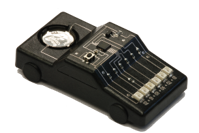 surface material. Direct write of the circuit gives simpler process chain and reduced Work in Progress. On the right is image of 3D MID Demonstrator Circuit. Ag on PA6 with added SMDs.
surface material. Direct write of the circuit gives simpler process chain and reduced Work in Progress. On the right is image of 3D MID Demonstrator Circuit. Ag on PA6 with added SMDs.
3D printed circuits can be used to create heater patterns on materials such as PC for  automotive applications. The use of PC in glazing applications can give weight savings of up to 50% compared to using glass. Neotech’s 5 axis printing methodology is scalable from small to large components in excess of 2m x 2m. On the right is 3D MID Heater Circuit on PC. IR thermal image from electrical load test. Peak temperature of 107°C.
automotive applications. The use of PC in glazing applications can give weight savings of up to 50% compared to using glass. Neotech’s 5 axis printing methodology is scalable from small to large components in excess of 2m x 2m. On the right is 3D MID Heater Circuit on PC. IR thermal image from electrical load test. Peak temperature of 107°C.
Aerosol Jet printing allows for the use of many different ink types and 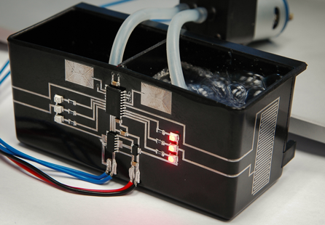 functionalities. Using novel combination of printed materials and SMDs sensor structures can be integrated into mechanical structures. Here is image of 3D MID Sensor Circuit. Filling level sensor constructed from Ag on PA6 with added SMDs.
functionalities. Using novel combination of printed materials and SMDs sensor structures can be integrated into mechanical structures. Here is image of 3D MID Sensor Circuit. Filling level sensor constructed from Ag on PA6 with added SMDs.
For more information contact Neotech AMT GmbH
The Multiple Dimensions 3D-MID demonstrator shows various implemented functions like capacitive  switch, battery holder, through holes (diameter < 100µm) as well as 3D-electronic-assembly.
switch, battery holder, through holes (diameter < 100µm) as well as 3D-electronic-assembly.
There are two main approaches to manufacturing 3D-MID products. The process of laser direct structuring (LDS) is widespread and is now established around the globe. With LDS, a single physical form is created with plastic injection molding. Thanks to the 3D design freedom of modern molding, the shape is nearly boundless. The molded thermoplastic contains a non-conducting organic-metal complex as an additive. As the laser scribes the desired circuit layout over the surface of the component, metal nuclei within the additive are activated, becoming attractive sites for metal plating. Chemical plating then applies copper, nickel and gold layers to transform the plastic part into a three-dimensional circuit carrier. Multiple Dimensions AG is dominant in the LDS process but also produces 3D MID products using 2K, also known as the “2-shot” process. With 2K two different plastic materials are injection –molded side by side, with one material attractive to chemical plating the other material is more inert and acts as the electrical insulator.
Refer http://electronicsmaker.com/3d-mids-for-sensor-applications
Below are few key highlights from Electronic News as they impact HMI Devices for Automotive. For more details click https://electronicsnews.com.au/product/
IN-VEHICLE Wireless Device Charging will change the way consumers interact with their cars, with 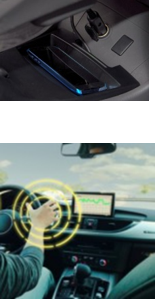 50 million vehicles to offer this capability by 2020, claims Juniper Research. To meet charging standards some auto-makers have started providing solutions that cater for two main specifications: Qi and A4WP/PMA.
50 million vehicles to offer this capability by 2020, claims Juniper Research. To meet charging standards some auto-makers have started providing solutions that cater for two main specifications: Qi and A4WP/PMA.
Hoffmann + Krippner SensoFoil Technology allows cars to sense the position of a driver’s hands on the steering wheel. With the addition of pressure sensing, the cars will also be able to sense if the drivers’ hands are no longer moving, whether this is due to the driver falling asleep at the wheel, or the hands falling off the wheel.
Upon detection, smart cars can then take the appropriate action according to in-built safety protocols, either to wake the driver up, or to take control over the vehicle and steer it to a safe stop.
A NEW Consumer Study by element14 shows healthcare, renewable energy and environment should be top priorities for technology and innovation.
Indian consumers rated education as their top priority, while Chinese consumers valued space exploration and aerospace more than the rest of the world, while those living in Germany are most interested in advancing entertainment via technology.
The study is part of element14’s broader “Engineering a Connected World” initiative which includes a series of global design challenges over the next 24 months. The challenges will focus on innovation in energy efficiency, food production and medical technology, and in leading them element14 will oversee the development of more than 100 engineering concepts and prototypes
APPLE has been hiring automotive experts, and various reports from media. Of course, there are other  possibilities. It could also be making a play for automotive electronics controls and HMI systems – to bring its design and technical skills to play in car dashboards. Or it could be working on integrating mobile devices into cars.
possibilities. It could also be making a play for automotive electronics controls and HMI systems – to bring its design and technical skills to play in car dashboards. Or it could be working on integrating mobile devices into cars.
HUDWAY Glass is a vehicle accessory that turns smartphone into a head-up display (HUD) for any car. It offers visibility, crisp interface, and works with any car or HUD app,
The body is UV Durable Hypoallergenic ABS and PC measuring 0.98″L x 5.91″W x 4.33″H.
Adamant has a compact and self-charging high efficient vibration-driven Energy Harvesting Device. Et Energy source for wireless communications such as ZigBee, Bluetooth Low Energy, and IR. It is a small independent power source for wireless sensor networks, night LED lighting or security systems.
Auxiliary power source for longer battery life.
Alta Devices Thin, Flexible and Lightweight solar panel is a thin layer of GaAs on top of a single  crystal GaAs wafer using a high throughput metalorganic chemical vapor deposition (MOCVD) process. We then remove this thin layer via an epitaxial lift-off (ELO) process which leaves a thin, flexible, and lightweight solar cell.
crystal GaAs wafer using a high throughput metalorganic chemical vapor deposition (MOCVD) process. We then remove this thin layer via an epitaxial lift-off (ELO) process which leaves a thin, flexible, and lightweight solar cell.
Argil showed Electrochromic Film for Automotive, Architectural and other applications. It is  designed to harness solar energy with potential application for smart windows. Sunlight reaching films on windows can be converted into energy.
designed to harness solar energy with potential application for smart windows. Sunlight reaching films on windows can be converted into energy.
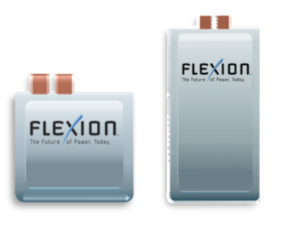 BrightVolt Thin (0.37mm – 0.45mm) Film Batteries patented solid-state electrolyte produces ultra-thin, flexible, environmentally safe, high energy density lithium polymer batteries.
BrightVolt Thin (0.37mm – 0.45mm) Film Batteries patented solid-state electrolyte produces ultra-thin, flexible, environmentally safe, high energy density lithium polymer batteries.
These are Flexible IS0 7816 Certified / UL listed: UL1642 with capacity of 10mAh to 48mAh. Will meet automotive environmental requirements at nominal voltage is 3.0v.
CDT is developing energy harvesting and storage solutions to the challenges of providing renewable energy, and power solutions for ubiquitous electronics.
renewable energy, and power solutions for ubiquitous electronics.
In addition, they are working on Flexible Printed flexible OLED displays that are RGBW 400 cd/m2 achievable at less than 5V operating voltage and low power requirements.
Central Midori develops customized membrane switches without direct sensitive feedback and tactile solutions with metal domes and poly domes, which provide immediate tactile response.
BEBOP SENSORS used in smart washable fabrics that can measure XYZ location, Bend, Twist,  Rotation, Force. Materials available in woven and non-woven base cloth with multiple sensors can be placed on same piece of fabric.
Rotation, Force. Materials available in woven and non-woven base cloth with multiple sensors can be placed on same piece of fabric.
Thickness from .25 mm to .50mm with electronic package (USB, BLE, CAN, WIFI) embedded into fabric. Printed layers include dielectric, resistive and controlled conductive.
Enfucell SoftBattery® is a disposable, thin and flexible printed power source for devices like wireless sensors. The technology enables a wide range of sizes from 1 cm² to 100 cm² and various shapes. SoftBattery® is suitable for low power applications, which require flexible and thin properties.
Rigid flex circuits from Flex Circuit Technologies combine the best of both rigid boards and flexible circuits integrated together into one circuit. The two-in-one circuit is interconnected through plated thru holes. Rigid flex circuits provide higher component density and better quality control. Designs are rigid where extra support is needed and flexible around corners and areas requiring extra space.
Forster Rohner Textile Innovations integrates electronic functionalities in textiles in textile conductors, textile heating, textile sensors and textile lighting.
Interactive Wear provides a portfolio of readily available components and products that can be used either in their existing form, or customized to fit specific customer requirements for smart textiles applications expertise with focus on connectivity and integration.
Magi SciTech Inc battery has carbon nanotube microstructure designed for higher electrical current charging and discharging application. Graphene film heat sink unique structure of combination of three materials of Nano Carbon, Diamond and Graphene, is designed for fan less thermal management applications.
Royole Flexible Display Technology offers advantages as it is ultra-thin, light weight, bendable, portable, shatter-proof, unbreakable and low energy, etc. They have intellectual property rights and key technical know-hows covering all aspects of display manufacturing including materials, processing, devices, circuits, electronic systems and module development.
They have developed thin AMOLED flexible display that was integrated with a fully-functional mobile phone platform. The overall display thickness was only about 0.01 mm (10 µm), as thin as an onion skin. Due to its ultra-thin thickness, bending radius of the flexible display can be as small as 1 mm, which is even thinner than a pen refill. The display still has the capability to display high quality videos with brilliant and vivid colors in the bending status or after 50K ~ 100K of bending cycles.
Together with ITRI, Taiwan, Heraeus, demonstrated the integration of Clevios™ conductive  polymer based touch panel with AM OLED technology in a highly flexible device.
polymer based touch panel with AM OLED technology in a highly flexible device.
The device was prepared using Clevios™ PEDOT conductive polymer material (formulated by EOC, Taiwan) patterned on ITRI’s FlexUp™ substrate. Solution processable and printable Clevios™ PEDOT: PSS is used as the transparent electrode in this device. In the project a 7-inch flexible Touch Panel / AM OLED device was produced.
Read more at: http://www.printedelectronicsworld.com/articles/8328/flexible-7-inch-touch-panel-with-integrated-oled-display-developed
FlexEnable’s OTFT-Based Technology gives plastic LCDs the same optical performance as glass LCDs, while removing the constraints of glass.
Flexible displays can break through the constraints of glass to transform car interiors as a curved display on the A-pillar of the car can replace the wing mirror (for increased aero dynamic efficiency) or show the driver what is behind the pillar (for increased safety).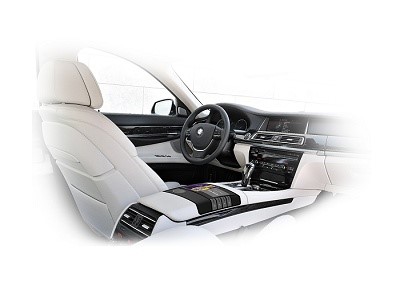
FlexEnable’s technology platform can be used to produce low-cost, flexible organic LCD (OLCD) that is glass-free, ultra-thin and shatterproof.
For strategic projects, we provide prototype OLCDs with backlights and driver electronics made in our prototyping line in Cambridge, UK.
Their low temperature manufacturing process (below 100°C) means very low cost plastics can be used instead of more expensive glass, resulting in the lowest cost approach to flexible active matrix displays.
Per GREEN DIARY, flexible and bendable displays by AU Optronics (AUO) build up 20-inch and 3-inch flexible e-papers.
PowerFilm has developed a method to print roll-to-roll displays. The PowerFilm flexible display  features an array of interconnected backplane transistors to realize the display. The roll-to-roll displays from PowerFilm can be printed so like the newspapers.
features an array of interconnected backplane transistors to realize the display. The roll-to-roll displays from PowerFilm can be printed so like the newspapers.
The major benefit of flexible e-paper is that it is eco-friendly as it has potential to replace newspapers, magazines and books. Disadvantage is that may not be able to watch contents in full colors on e-papers.
LG Roll Up Display Screen that can be rolled up like a newspaper opens the door for form factors you probably can’t even imagine right now, and it’s exciting to say the least.
It was a major attraction at the 2017 CES.



